Japan Tour Packages
Japan is famous for lot of things like technology, mobile phones, and beautiful women. But one thing that has not been getting the due attention is their tourism industry. Unbelievable but true, the Japanese tourists have been producing volumes of revenue in Asian countries, including India. If you are planning to travel any where in north east region of India like visa, etc then you should not ignore the value of Japan Tour Packages which offers a complete package for your journey at a minumum price tag.
Some first-time guests to Japan are frequently amazed to discover that, as one of the world's most exceptional industrialized countries, this somewhat little Asian nation additionally flaunts a rich and captivating history that goes back millennia. Without a doubt, some time before a large number of Europe's most tremendous basilicas were assembled, Japan's Shinto and Buddhist sanctuaries were at that point grounded and drawing explorers and supporters for their regularly intricate plans and stylistic theme. Simultaneously, the nation was at that point culminating the abilities and exchanges that would show it the way to wealth, from fine porcelains and earthenware production to materials like silk. Quite a bit of this rich custom has, notwithstanding wars and normal obliteration, been protected (or modified), and a visit to Japan is a vital experience. Bragging a perpetual rundown top attractions, things to see and do, and focal points to investigate, a get-away in Japan is surely an extraordinary speculation of time and cash. Find the best places to visit in the country with our rundown of the first class vacation destinations in Japan..
Mount Fuji

No ifs, ands or buts Japan's most conspicuous milestone, great Mount (Fuji-san) is additionally the country's most elevated mountain top, transcending 3,776 meters over a generally to a great extent level scene toward the south and east, and adequately tall to be seen from Tokyo in excess of 100 kilometers away. Mount Fuji has for a really long time been commended in craftsmanship and writing and is presently viewed as so significant a symbol that UNESCO perceived its reality social importance in 2013. Part of the Fuji-Hakone-Izu National Park, Mount Fuji is move by in excess of 1,000,000 individuals each late spring as a demonstration of journey, which comes full circle in watching the dawn from its highest point. While some actually decide to start their move from the base, most of climbers currently start from over the midway imprint, at the fifth Station, bringing about a more reasonable six or so hour rising. Obviously, for some, just survey the mountain from the distance, or from the solace of a quickly moving train, is sufficient to say "no need to relive that."
Imperial Tokyo
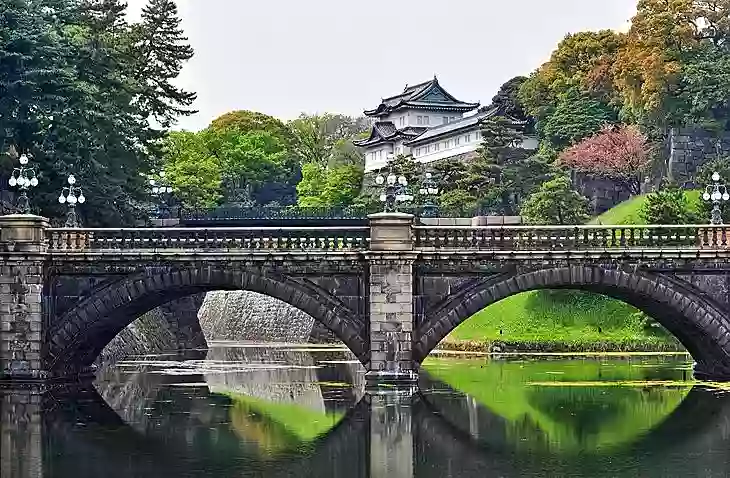
Tokyo's most famous landmark, the Imperial Palace Tokyo's most renowned milestone, the Imperial Palace with its delightful seventeenth century parks encompassed by dividers and channels, is an unquestionable requirement when visiting the country's capital. Try not to be put off by the way that most of the royal residence is shut to the general population (it's as yet being used by the Imperial family), as there is still to the point of seeing essentially by walking the grounds. Notwithstanding the many fine perspectives on the castle from various places in the encompassing parkland - including the popular Nijubashi Bridge, or "twofold extension," so named for its watery reflection - guests are allowed into the East Higashi-Gyoen Garden and different regions that are opened to the general population as a component of a coordinated visit. Another must-see for sightseers visiting Tokyo is the popular Ginza shopping locale, home to the Kabuki-za Theater with its Kabuki exhibitions, just as the Shimbashi Enbujo Theater with its customary Azuma-odori moves and Bunraku exhibitions.
Hiroshima Peace Memorial Park

While little need be said here of the repulsions of the nuclear besieging of Hiroshima in August 1945, much can be said to describe the fantastic endeavors this energetic city has made to remember the numerous casualties of the world's first atomic assault, and maybe significantly more critically, the image of enduring harmony Hiroshima has since become. Visited by in excess of 1,000,000 individuals every year, numerous from abroad, Hiroshima Peace Memorial Park (Hiroshima Heiwa Kinen Kōen) lies at the focal point of the nuclear impact in the thing was once a clamoring part of the city and incorporates various significant landmarks, remembrances, and galleries connecting with the occasions of that critical day. Notwithstanding the grounds and gardens with their vivid cherry blooms, the recreation area's features incorporate the Peace Memorial Museum with its various displays managing the issue of world harmony, and the Memorial Cenotaph and the Flame of Peace, just as the Atom Bomb Dome, the remnants of a regulatory structure that lay at the focal point of the blast.
Historic Kyoto

One of Japan's most visited urban areas, wonderful Kyoto - one of a handful of the urban communities in the country to be saved the obliteration of WWII - draws in excess of 10 million guests every year to investigate its fine old roads and engineering, quite a bit of it unaltered since the Imperial family took up home here over 1,000 years prior. And, after its all said and done, the city was Japan's most significant social place, a heritage that proceeds with its numerous exhibition halls and craftsmanship displays, each overflowing with significant models, compositions, and other works of art. Features of Kyoto's Buddhist-affected engineering incorporate its some all around protected sanctuaries, 30 of which are as yet being used, and significant designs like the fourteenth century Golden Pavilion (Kinkaku-ji), well known for its impeccable gold-leaf-clad outside. Make certain to likewise visit Nijo Castle, a seventeenth century fort that has held its unique dividers, pinnacles, and canal; its delightful doors; and its royal residence with fine inside style. Likewise worth a visit is the first Kyoto Imperial Palace (Kyoto-gosho), worked in AD 794 and one of the city's most visited notable destinations. At last, no visit to Kyoto is finished without investing energy investigating the Arashiyama Bamboo Grove, a lovely area of tall bamboo only a couple of moments' stroll from the town community..
The Island Shrine of Itsukushima
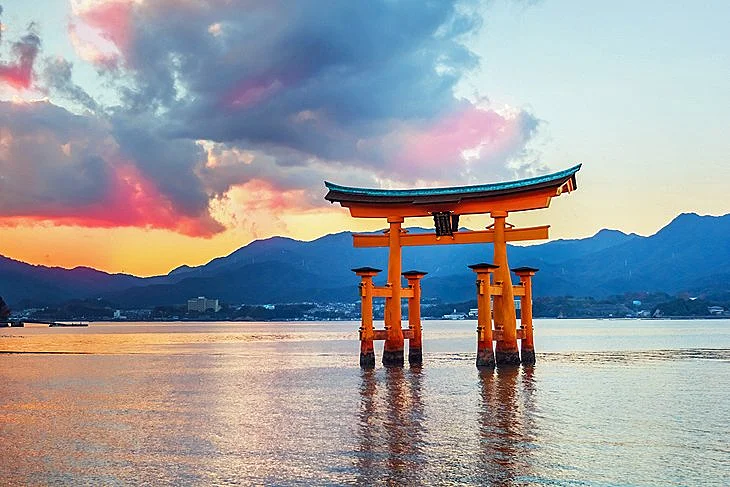
Just a short ferry ride from mainland Hiroshima is the island of Miyajima, Simply a short ship ride from central area Hiroshima is the island of Miyajima, renowned the world over as Japan's Shrine Island. Covering an area of 30 square kilometers in Hiroshima Bay, Miyajima is most popular as the home of the Itsukushima Shrine, a Shinto sanctuary devoted to the Princess girls of the breeze god Susanoo. Dating from the eighth century, most of the hallowed place's structures emerge from the waters of a little inlet upheld exclusively by heaps. The impact at elevated tide is absolutely dazzling, making these designs - including the renowned Great Floating Gate (O-Torii) - show up as though they're drifting on water. Connected together by walkways and extensions, it's a captivating spot to investigate, specifically its bigger lobbies, for example, the impeccable Honden (Main Hall), the Offerings Hall (Heiden), the Prayer Hall (Haiden), and the Hall of a Thousand Mats (Senjokaku). Another eminent element is the holy place's stage where guests are engaged with customary moves and melodic exhibitions. Additionally worth investigating are the island's perfect grounds and gardens, home to wild deer and various bird states.
Temple City: Historic Nara
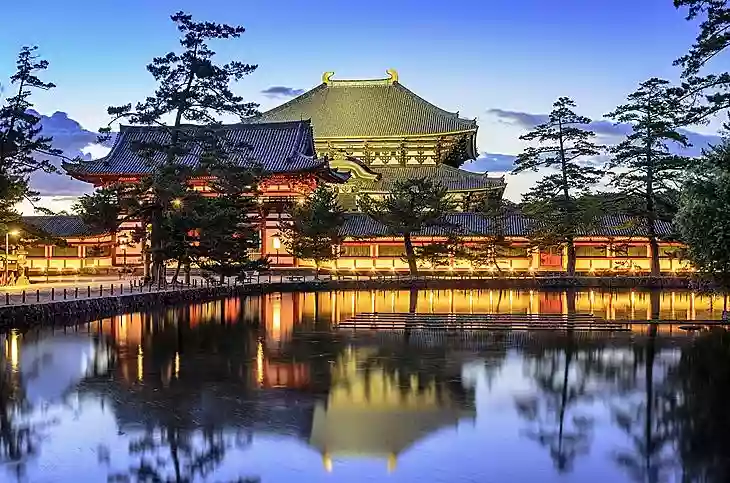
For quite a long time the center point of Japanese culture, the exquisite pristine city of Nara is home to countless memorable structures, alongside significant irreplaceable assets and things of beauty. Notwithstanding its numerous memorable roads, the city flaunts various significant old sanctuaries, including the brilliant seventh-century Kofuku-ji Temple, maybe the most popular of the Seven Great Temples of Nara; and the magnificent eighth-century Todai-ji (Great East Temple), renowned for its tremendous bronze sculpture of the Great Buddha (Daibutsu), cast here in AD 749. Additionally of interest in Todai-ji are its Great South Gate (Nandaimon), a two-story structure borne on 18 sections with two Nio sculptures standing eight meters tall and watching the sanctuary entrance, and the Hall of the Great Buddha, the world's biggest lumber building..
Osaka Castle

Worked in 1586 by popular Japanese champion and government official Toyotomi Hideyoshi, Osaka Castle (Ōsaka-jō) was at the time the biggest and most significant stronghold in the country. Albeit obliterated and reconstructed various occasions since, the current design, worked in 1931, stays consistent with the first. Features of a visit incorporate the immense five-story, 42-meter-tall primary pinnacle based on an overwhelming 14-meter-tall stone base and home to various presentations specifying the historical backdrop of the palace and the city; make certain to visit the highest level for its magnificent perspectives over Osaka, a particularly alluring sight as the sun sets. Likewise of interest in Osaka Castle Park is the Hokoku Shrine, while Osaka's most popular sanctuary, Shitennō-ji, is additionally worth visiting and traces all the way back to AD 59. Remarkable as Japan's first Buddhist sanctuary, this beautiful altar includes a five-story pagoda alongside various other perfectly designed structures including the Golden Pavilion (Kondō) with its fine sculptures and compositions, the Lecture Hall (Kōdō), and an exquisite covered hallway connecting three of the site's doors.
Chūbu-Sangaku National Park and the Japanese Alps
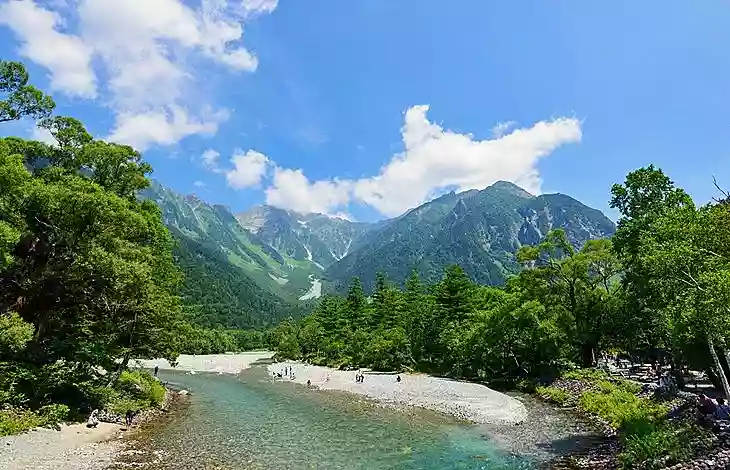
Worked in 1586 by popular Japanese champion and government official Toyotomi Hideyoshi, Osaka Castle (Ōsaka-jō) was at the time the biggest and most significant stronghold in the country. Albeit obliterated and reconstructed various occasions since, the current design, worked in 1931, stays consistent with the first. Features of a visit incorporate the immense five-story, 42-meter-tall primary pinnacle based on an overwhelming 14-meter-tall stone base and home to various presentations specifying the historical backdrop of the palace and the city; make certain to visit the highest level for its magnificent perspectives over Osaka, a particularly alluring sight as the sun sets. Likewise of interest in Osaka Castle Park is the Hokoku Shrine, while Osaka's most popular sanctuary, Shitennō-ji, is additionally worth visiting and traces all the way back to AD 59. Remarkable as Japan's first Buddhist sanctuary, this beautiful altar includes a five-story pagoda alongside various other perfectly designed structures including the Golden Pavilion (Kondō) with its fine sculptures and compositions, the Lecture Hall (Kōdō), and an exquisite covered hallway connecting three of the site's doors..
The Atsuta Shrine, Nagoya
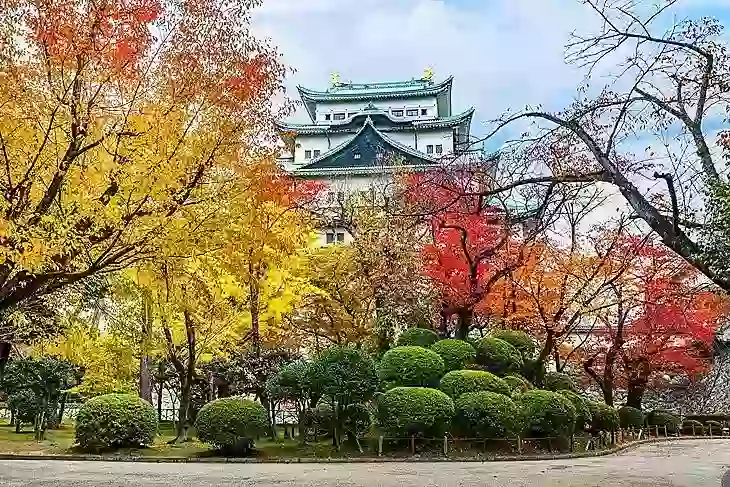
The Atsuta Shrine, in the core of the city of Nagoya, is the main Shinto altar in Japan, and draws in excess of 5,000,000 guests every year. Set up in the principal century, this strict site is renowned for its saved Imperial symbol, the "grass-cutting sword" (kusanagi-no-tsurugi), one of just three in the country. Likewise of premium are its chief sanctuary, Hongu, encompassed by an encasing divider, and the depository with its various things of beauty, including old and current artistic creations, pottery, adornments, and customary covers. While
Fukuoka Castle and the City's Ancient Festivals
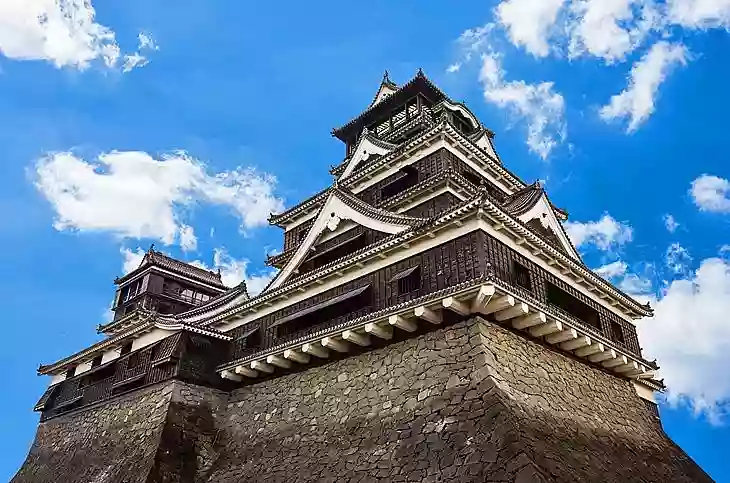
Likewise of premium are its chief sanctum, Hongu, encompassed by an encasing divider, and the depository with its various things of beauty, including old and present day artistic creations, pottery, gems, and customary covers. While in Nagoya, make certain to likewise visit Nagoya Castle, an awesome moated complex implicit 1612 flaunting a 48-meter-high principle tower that is renowned for its two overlaid dolphins (shachi), its historical center containing workmanship treasures from the previous royal residence, and its dynamite sees over the city and the Nobi Plain.
Sapporo, Hokkaido
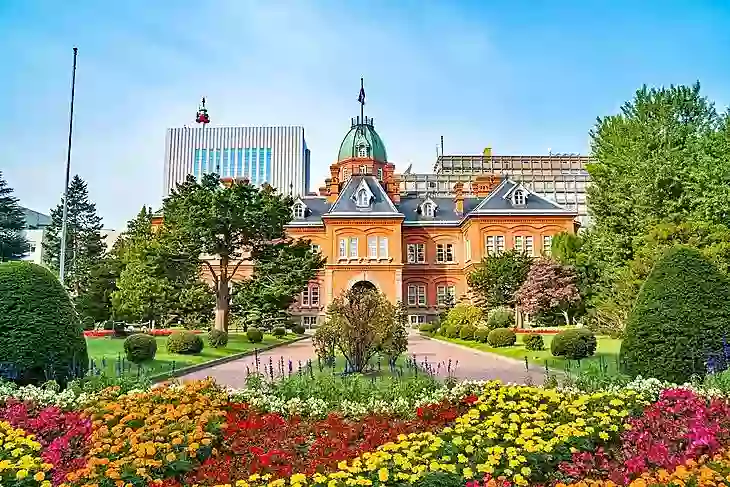
One of a handful of the enduring instances of the once productive and superb ridge homes liked by Shoguns and city rulers, Fukuoka Castle (Fukuoka-jō) is one of the features of a visit to Fukuoka. When piece of a huge complex that covered a region of nearly 47,000 square meters, this wonderful palace actually intrigues with its size and its situation on a tall establishment neglecting the Naka River. Fukuoka is additionally notable for its numerous occasions and celebrations, specifically the Hakata Gion Yamakasa, a popular fourteen day long, 700-year-old festival held every July that draws a huge number of guests from the nation over to its beautiful processions, just as its conventional races and outfits. The city isn't without its advanced attractions, as well, including Canal City Hakata, a-city-inside the-city complete with a channel going through the complex alongside extraordinary shops, inns, eateries, and a theater.
